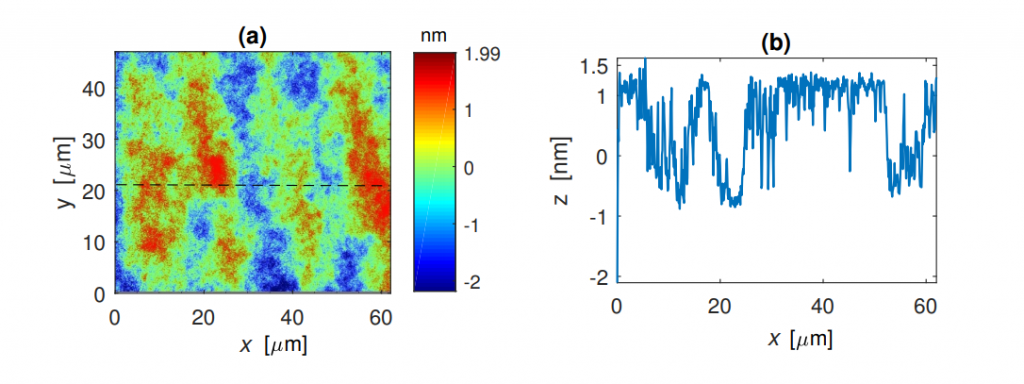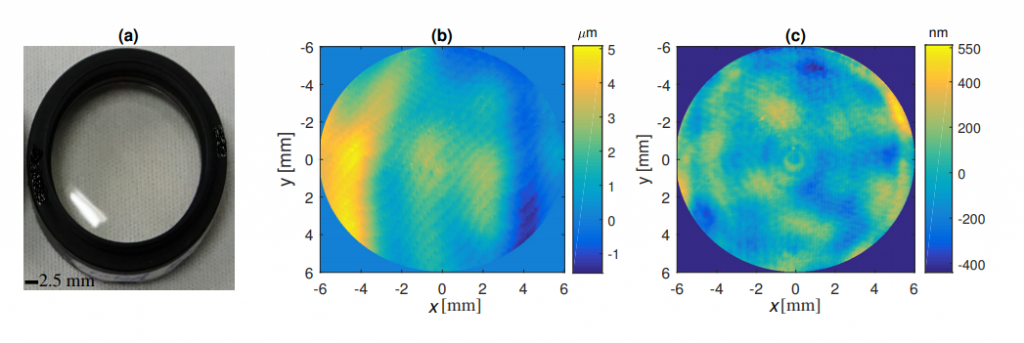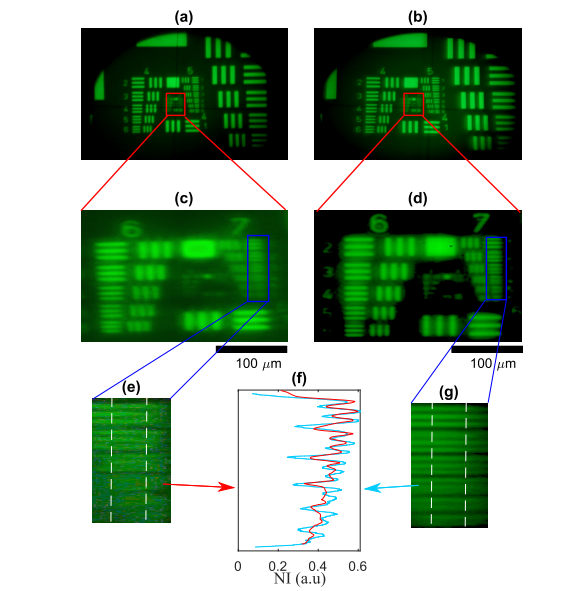Many users and larger industrial businesses today are turning to 3D printing over conventional techniques due to substantial benefits suitable for a wide range of applications, including optics. In ‘Imaging-quality 3D-printed centimeter-scale lens,’ authors Bisrat G. Assefa, Markku Pekkarinen, Henri Paranen, Joris Biskop, Jari Turunen, and Jyrki Saarinen explore more efficient processes for producing prototypes and small volumes of polymer optics with 3D printing.
Falling in line with much that 3D design and 3D printing have to offer users on nearly every level, polymer optics require manufacturing that entails affordability, and the ability to produce compact, lightweight parts. Injection molding has been a common method of production but can also be limiting and time consuming. Here, the researchers are using Luxexcel-Printoptical Technology, a form of rapid ink-jet 3D printing to create macroscopic optics related to non-imaging. The center of their study is an imaging lens produced via 3D printing with centimeter-scale diameter, and the ability to perform like a conventional, commercial glass lens.
Three printheads are used in the 3D printing process, and the authors explain that each one is misaligned to triple the resolution, depositing 17 µm diameter droplets of liquid polymer on the substrate. UV light is used to cure each layer, and no post-processing is required.
“The improvements reported here result, on one hand, from process improvements gained by better understanding and control of the intricate fluid chemistry. On the other hand, we introduce an iterative manufacturing technique to correct surface shape errors by testing the 3D printed element against a reference element with a reasonably similar optical function,” state the researchers, while also explaining that further evaluation also provides data regarding output-wavefront error at subwavelength accuracy—with refinements made until wavefront error is acceptable.

Surface roughness of 3D printed lens. (a) A 2D map of the surface over an small area (60 µm × 50 µm). (b) Cross-sectional surface profile at the center in nanometer scale.
They attribute success of the iterative process to speed:
- Writing time of one 4.1 µm thick polymer layer (with an area of 6 × 7 cm2) is only 4 seconds.
- Ramp-up phase of manufacturing takes less one half a ‘working day.’
- Eight lenses can be printed per hour.

An example of a sliced layer image pixels after the error correction. The white pixels are left unprinted to compensate for the shape error. The diameter of the compensated area is ∼ 12 mm.
In evaluating and comparing the 3D printed lens with its commercially-manufactured counterparts, they found that although the commercial lens did offer ‘somewhat superior performance,’ this could be resolved with further refinement of the process. They also explained that 3D printing of the lenses is currently somewhat limited because there is only one polymer material available, LUX-Opticlear, and it is not suitable for fabrication of an achromatic lens system.
“However, manufacturing such systems is possible by combination of 3D printing with silicon molding and vacuum casting techniques,” concluded the researchers. “Polymers with Abbe numbers ranging from 30-60 can be employed in such a process.
“Another option is the use of hybrid refractive-diffractive optics. However, 3D printing of conventional modulo 2π diffractive surfaces is not currently possible due to the large (4.1 µm) single-layer thickness in the Printoptical process; hence molds for diffractive surfaces would have to fabricated by more expensive techniques such as diamond turning or lithography.”

(a) A 3D printed lens (F# = 8.4) with 25 mm clear aperture. (b) Surface profile error before iteration. (c) Surface deviation after five iterations.
Along with other elements involving energy that are deemed to be a requirement for daily life, humans spend an inordinate amount of time controlling light and a wide range of surrounding mechanisms. We use technology, from the most basic to complex to harness light, and with 3D printing, users, designers, engineers, and researchers have been able to create microstructures for optics, embed geometrics, and even bend light. Find out more about how 3D printing can affect lighting applications here. What do you think of this news? Let us know your thoughts! Join the discussion of this and other 3D printing topics at 3DPrintBoard.com.

Images of a USAF 1951-1X MTF resolution target with (a) the 3D printed lens and (b) the commercial reference lens with 12 mm aperture diameter using a green band-pass filter. Magnified images of Groups 6 and 7 of the resolution target with (c) 3D-printed and (d) commercial lens. Magnified images of Group 7 in (e) and (g), and cross-sectional intensity profiles in (f), t
Subscribe to Our Email Newsletter
Stay up-to-date on all the latest news from the 3D printing industry and receive information and offers from third party vendors.
You May Also Like
Slice Engineering and Egyptian NGO Give Amputees Free 3D Printed Prosthetics
Florida-based Slice Engineering believes that additive manufacturing can reshape industries and make a lasting impact on humanity, and so works hard to empower innovators and professionals. The company does this...
3D Printing Financials: Markforged Reports Q1 2024 Results Amid $17.3M Patent Litigation Setbacks
Markforged (NYSE: MKFG) reported its financial results for the first quarter of 2024, marked by increased net losses and a decline in revenue. Despite launching a new 3D printer and...
Markforged Ordered to Pay $17M to Continuous Composites for Patent Infringement
In a decision on April 15, 2024, the District Court of Delaware ruled in favor of carbon fiber 3D printing firm Continuous Composites, in its patent infringement lawsuit against Markforged...
Rising Patents Signal U.S. and Europe as 3D Printing Powerhouses
In a landscape where innovation is the name of the game, 3D printing is stealing the spotlight. Once a niche technology, 3D printing is breaking traditional production barriers, cutting waste,...

































